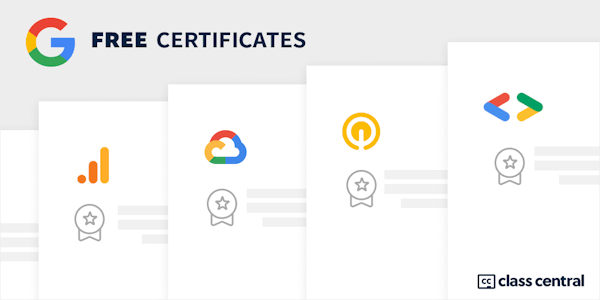Overview
This course is the seventh course in the Google Data Analytics Certificate. In this course, you’ll learn about the programming language known as R. You’ll find out how to use RStudio, the environment that allows you to work with R, and the software applications and tools that are unique to R, such as R packages. You’ll discover how R lets you clean, organize, analyze, visualize, and report data in new and more powerful ways. Current Google data analysts will continue to instruct and provide you with hands-on ways to accomplish common data analyst tasks with the best tools and resources.
Learners who complete this certificate program will be equipped to apply for introductory-level jobs as data analysts. No previous experience is necessary.
By the end of this course, learners will:
- Examine the benefits of using the R programming language.
- Discover how to use RStudio to apply R to your analysis.
- Explore the fundamental concepts associated with programming in R.
- Understand the contents and components of R packages including the Tidyverse package.
- Gain an understanding of dataframes and their use in R.
- Discover the options for generating visualizations in R.
- Learn about R Markdown for documenting R programming.
Syllabus
- Programming and data analytics
- R is a programming language that can help you in your data analysis process. In this part of the course, you’ll learn about R and RStudio, the environment you’ll use to work in R. You’ll explore the benefits of using R and RStudio as well as the components of RStudio that will help you get started.
- Programming using RStudio
- Using R can help you complete your analysis efficiently and effectively. In this part of the course, you’ll explore the fundamental concepts associated with R. You’ll learn about functions and variables for calculations and other programming. In addition, you'll discover R packages, which are collections of R functions, code and sample data that you’ll use in RStudio.
- Working with data in R
- The R programming language was designed to work with data at all stages of the data analysis process. In this part of the course, you’ll examine how R can help you structure, organize, and clean your data using functions and other processes. You’ll learn about data frames and how to work with them in R. You’ll also revisit the issue of data bias and how R can help.
- More about visualizations, aesthetics, and annotations
- R is a tool well-suited for creating detailed visualizations. In this part of the course, you’ll learn how to use R to generate and troubleshoot visualizations. You’ll also explore the features of R and RStudio that will help you with the aesthetics of your visualizations and for annotating and saving them.
- Documentation and reports
- When you’re ready to save and present your analysis, R has different options to consider. In this part of the course, you’ll explore R Markdown, a file format for making dynamic documents with R. You’ll find out how to format and export R Markdown, including how to incorporate R code chunks in your documents.
Taught by
Google Career Certificates
Tags
Reviews
4.0 rating, based on 2 Class Central reviews
4.8 rating at Coursera based on 10898 ratings
Showing Class Central Sort
-
Overall, Google’s R Programming course is a strong choice for beginners, especially those looking to enter data analytics. It’s practical, well-structured, and integrates data visualization effectively. While it may not be ideal for advanced learners or those interested in more specialized data science applications, it’s an excellent starting point for building a foundation in R and data analysis.
-
- This training was an alright refresher for 'R programming'.
- Weekly quizzes for weeks 3 to 5 can be challenging, depending on your background
- The final course quiz/challenge at the end of week 5 was more pleasant to work my way through







